If you’re looking for a more efficient way to water your garden, you might be wondering if soaker hoses or drip irrigation is the better option. Both of these methods have their pros and cons, and it can be tough to decide which one is right for your garden. In this article, we will discuss the benefits of both soaker hoses and drip irrigation, as well as answer some frequently asked questions about both methods. We hope that after reading this article, you will have a better understanding of which method is best for you!
Do I need a soaker hose or a drip line?
The answer to this question really depends on your specific needs and garden setup. Soaker hoses are better for larger gardens that need uniform water distribution over wide areas, while drip lines are better suited for smaller, more precise watering jobs such as container plants or flower beds. If you have a large area that requires even watering, a soaker hose is likely the best choice. On the other hand, if you have multiple small areas with different requirements (such as flower beds or vegetable patches), then a drip line might be more suitable. [1]
Soaker Hose Overview
Soaker hoses are embedded with tiny holes that evenly distribute water over a large area. This makes them ideal for watering your lawn and garden, as they can be laid down in a single line or looped in patterns to cover more ground. They don’t require any additional pumps or power sources, so they can be set up quickly and easily.
Soaker hoses are also fairly low maintenance; you just connect them to a standard garden hose, turn on the water source, and you’re good to go! [1]
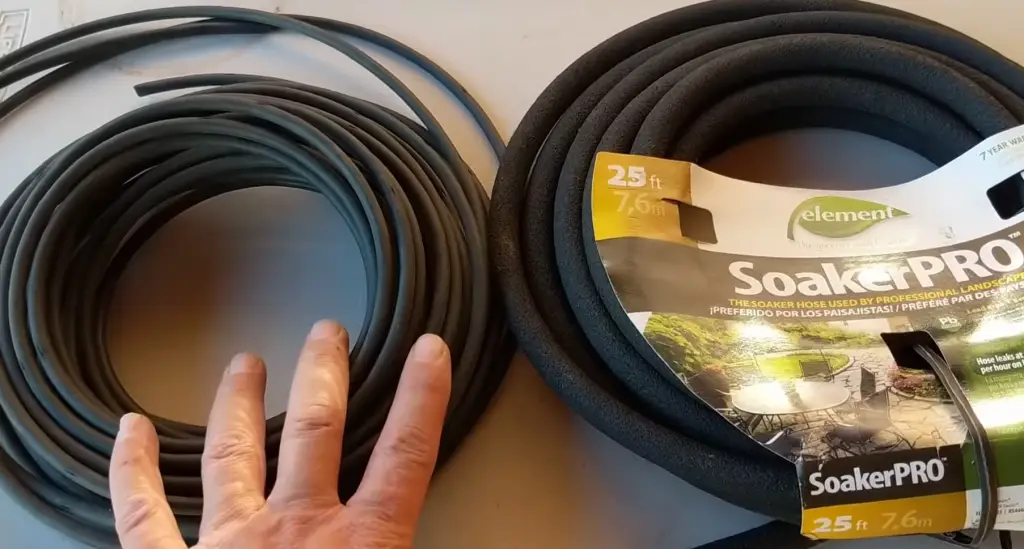
Soaker Hose Benefits
Simple to Set-Up
Setting up a soaker hose is quick and easy – all you have to do is lay out the hose, attach it to your water source, and turn it on. You don’t need special tools or knowledge – anyone can do it! [1]
Relatively Affordable
Compared to drip irrigation, soaker hoses are much more affordable. You can buy a quality 50-foot hose for around – far less than the cost of an equivalent drip system.
Low Water Pressure Requirements
Soaker hoses require very little water pressure to function properly. This makes them ideal for areas that don’t have a strong water pressure or where you’re using gravity-fed systems (like rain barrels). [1]
Pressure Regulators are not Necessary
Unlike with many drip systems, you don’t need to use a pressure regulator with soaker hoses. This saves you the cost and hassle of purchasing and installing the regulator.
Effective Watering
When used properly, soaker hoses can be very effective at delivering water directly to your plants’ roots. The slow-drip rate ensures that the soil is evenly moistened and not over or under-watered. [1]
Soaker Hose Disadvantages
Less Precise
Water Distribution
As the water flows out of a soaker hose, it is not evenly distributed. This can cause areas to be either over or under-watered. For this reason, a soaker hose may not be the best choice for gardens that require precise water distribution, such as vegetable gardens and flower beds. [1]
Inconsistent Pressure
Soaker hoses rely on pressure from the faucet they are attached to in order to deliver water efficiently. If the pressure changes, then it can affect how much water is delivered and where it goes. Since there is no way to regulate the pressure coming from the faucet, this makes using a soaker hose somewhat unpredictable. [1]
Clogging Potential
Another disadvantage of soaker hoses is their tendency to clog. This can be caused by mineral deposits such as calcium and lime that accumulate inside the hose, or by debris that gets caught in the small pores of the hose. If left unchecked, a clogged soaker hose can lead to poor water delivery and an uneven distribution of water throughout your garden. Regular maintenance is necessary to keep your soaker hose in good working condition. [1]
Not Versatile
While soaker hoses are great for watering large expanses of soil, they are not as versatile as drip irrigation systems. For example, with a soaker hose you can only water one area at a time and it is impossible to adjust the flow rate or pattern of water delivery. Additionally, since soaker hoses have an open end, they cannot be used on slopes or in areas where water runoff is likely to occur. This means that if your garden has any kind of uneven terrain then you may need to opt for a more versatile system such as drip irrigation. [1]
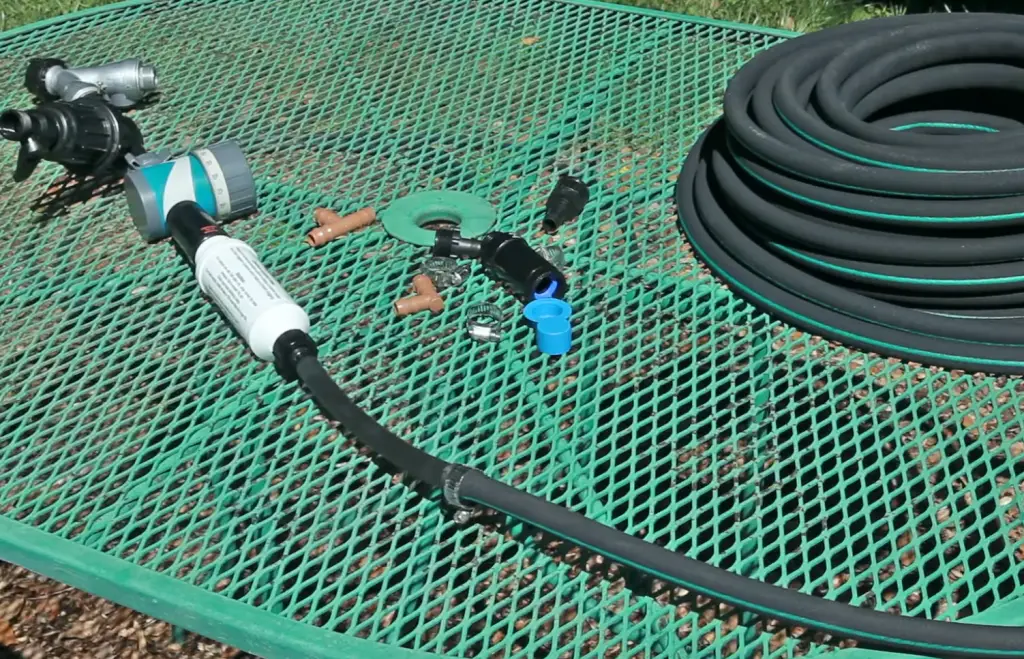
Drip Line Overview
Drip lines are a great way to give your plants the exact amount of water they need, using very little water. Drip lines can be installed from above or below ground and have either pre-set emitters or adjustable emitters so you can customize the watering schedule for each plant’s needs.
You will want to add a pressure regulator if you use a drip line and attach it to a hose bib or faucet since the low water pressure with drip irrigation is more delicate than that of other systems. Once attached, all you need to do is connect the drip line(s) directly to your garden beds, trees, flower pots, and other areas needing frequent watering. [1]
Drip irrigation benefits
More Precise
Drip irrigation is the most precise method of watering your garden, allowing you to target specific areas and provide exact amounts of water. This means no more over- or under-watering certain plants due to inconsistency when using a soaker hose. Drip systems also reduce water waste by delivering only what’s needed for each individual plant or area. [1]
Easier to Repair
Highly Customizable
The flexibility of drip irrigation makes it highly customizable. You can easily add, remove, or reposition the components and adjust the flow rate as needed. So if you need to water a few extra plants in your garden, it’s easy to just attach another dripper without having to buy a whole new soaker hose.
Overall, drip irrigation is more reliable than soaker hoses and offers many advantages that make it a better choice for most gardeners. With precise watering capabilities, easier repair options, and high customization potential, drip systems are sure to help you get the best results from your garden this season! [1]
Drip Line Limitations
Relatively Expensive
Drip irrigation is an ideal option for determining how much water a particular area needs, but it does have its limitations.
First, you’ll need to be careful that you don’t exceed the maximum flow rate of your drip line. If too much water is pushed through the system at once, it can clog up the emitters and cause damage.
Secondly, drip lines are relatively expensive compared to soaker hoses. You’ll need to take into account the cost of tubing, timers, filters, and emitters when planning out your budget for a drip irrigation system.
Lastly, this type of irrigation isn’t suitable for large areas as you would need many more emitters than a soaker hose could provide to properly cover the area. While drip irrigation is an ideal choice for long-term watering your garden, it may be too costly (or not practical) for larger areas. [1]
More Tedious to Install
Drip irrigation is also more tedious to install than a soaker hose. You’ll need to plan out your layout and design, then go about installing the system in accordance with all local regulations. This could require you to call for utility line markings, trenching, or drilling under sidewalks or driveways. All in all, it takes a bit of work and skill to properly set up a drip irrigation system. [1]
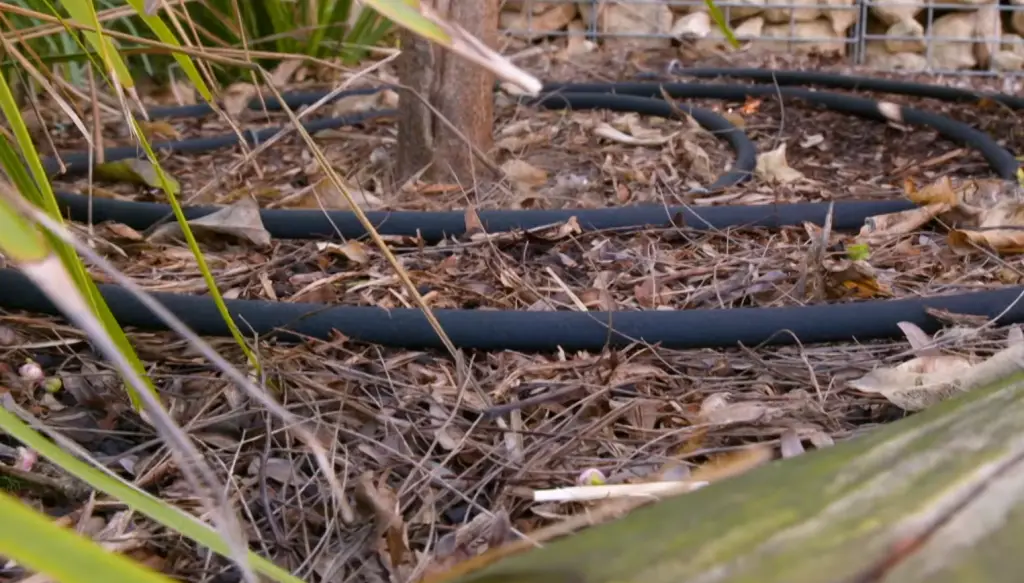
Getting the most from your irrigation system
No matter which type of irrigation system you choose, there are several steps you can take to ensure that your garden is properly watered and thriving. Here are a few tips:
- Make sure your system reaches the roots of plants by burying the soaker hose or drip line below the surface of the soil;
- Choose soaker hoses or drip lines with small holes for more precise watering;
- Use timers for automatic watering systems to ensure consistent water delivery and reduce water waste;
- Keep an eye on your water pressure, as this affects how well the water will reach your plants. If it’s too low, invest in a booster pump to increase it;
- Remember to clean out your irrigation system regularly to prevent clogs and ensure consistent water delivery;
- Check for leaks often to make sure your system is functioning properly [2];
FAQ
Are soaker hoses more efficient?
Soaker hoses are efficient in that they allow water to penetrate deep into the soil. This helps ensure that plants get plenty of hydration and nutrients, even in areas where the soil is dry or compacted. However, if you have an area with clay-based soils, you might find that a drip irrigation system works better since it is more targeted and less likely to be washed away by heavy rains.
Which are the advantages of using a soaker?
Soaker hoses are an efficient way to deliver water right where it’s needed. They are also very easy to install and use, making them a great choice for those who don’t have a lot of knowledge about irrigation systems. Additionally, they release water slowly, which helps reduce waste and erosion.
Why is it better to use a soaker hose instead of a sprinkler?
Sprinklers deliver water in a wide pattern, which can be wasteful if not used correctly. Soaker hoses, on the other hand, release water slowly and directly to a specific area – allowing you to deliver just the right amount of hydration without wasting it. Additionally, soaker hoses are much less likely to cause erosion, which can be a problem with traditional sprinklers.
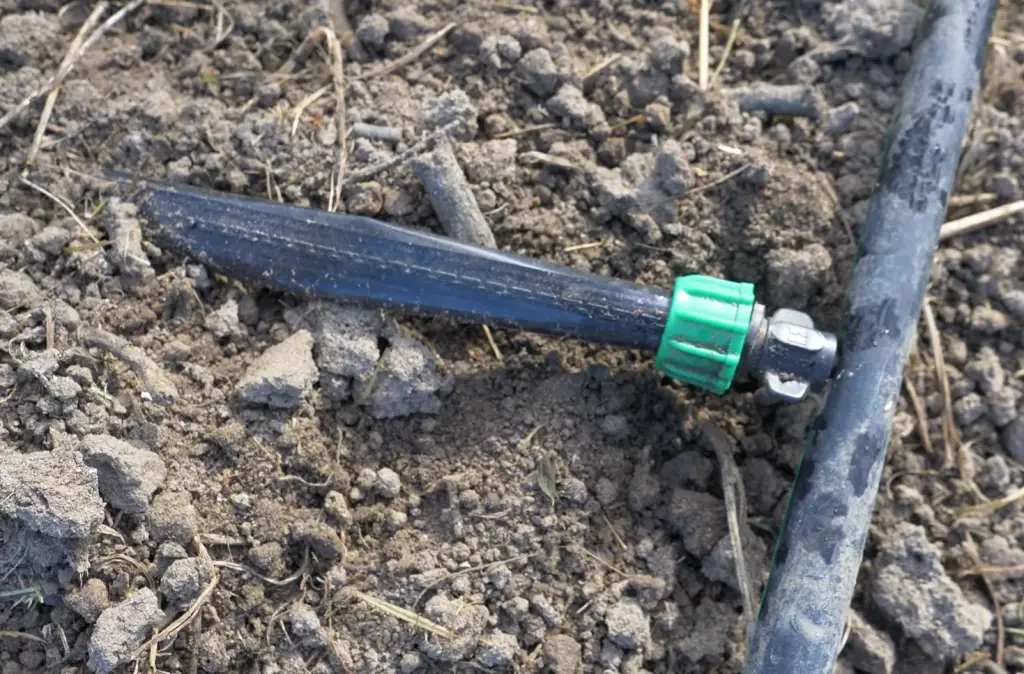
Do you leave a soaker hose on all the time?
No. For optimal water efficiency, you should turn the soaker hose off after a few hours of use. This will help ensure that plants get enough moisture without over-saturating them with too much water. Additionally, it can save money on your water bill if you’re using an automated system.
How long should you let your soaker hose run?
This depends on a few factors, such as your local climate and the type of plants you are watering. Typically, you should let the soaker hose run for two to four hours at a time. This should be enough to adequately water most plants without wasting too much water.
How much water does a soaker hose use per hour?
This varies depending on the size of the soaker hose and its flow rate. Generally, a standard 100-foot soaker hose will use about 2 gallons per hour. However, you should consult your manufacturer’s instructions to get an exact figure for your particular setup.
Are soaker hoses worth it?
Yes – soaker hoses can be a great way to water your plants efficiently. They are easy to install and use, and they help conserve water by delivering the right amount of hydration directly to where it’s needed. Investing in a soaker hose is a wise decision for anyone who wants an effective way to keep their plants healthy.
Should you bury your soaker hose?
Yes, it’s best to bury your soaker hose for optimal efficiency. This will help protect the hose from sun damage and ensure that water is delivered directly to where it’s needed. It also helps reduce evaporation, which can be a problem with uncovered hoses.
Useful Video: Soaker Hoses vs. Drip Irrigation
Conclusion
Soaker hoses and drip irrigation are both great options for providing your plants with the water they need. The best choice for you depends on your specific situation, budget, and preferences. Soaker hoses are typically easier to install, require less maintenance, and cost less upfront than drip irrigation systems. However, they have a shorter lifespan and don’t have as much control over water flow and distribution. Drip irrigation systems provide more flexibility but are usually more expensive, require a little more effort to install, and require regular maintenance to keep them running efficiently.
Whichever system you choose, take the time to plan your setup carefully. Think about how you want to deliver the water to your plants and how you can ensure that the water reaches them in the most efficient way possible. Once you’ve put in the effort to install and maintain your irrigation system, you’ll be sure to reap the rewards of healthy, thriving plants for many seasons to come!
Happy gardening!
References:
- https://www.easygardenirrigation.co.uk/blogs/news/soaker-hose-vs-drip-line
- https://learn.eartheasy.com/articles/drip-irrigation-vs-soaker-hoses-which-is-better-for-your-garden/
- https://www.backyardgardener.com/garden-tip-articles/articles/drip-irrigation-vs-soaker-hose-whats-the-difference/





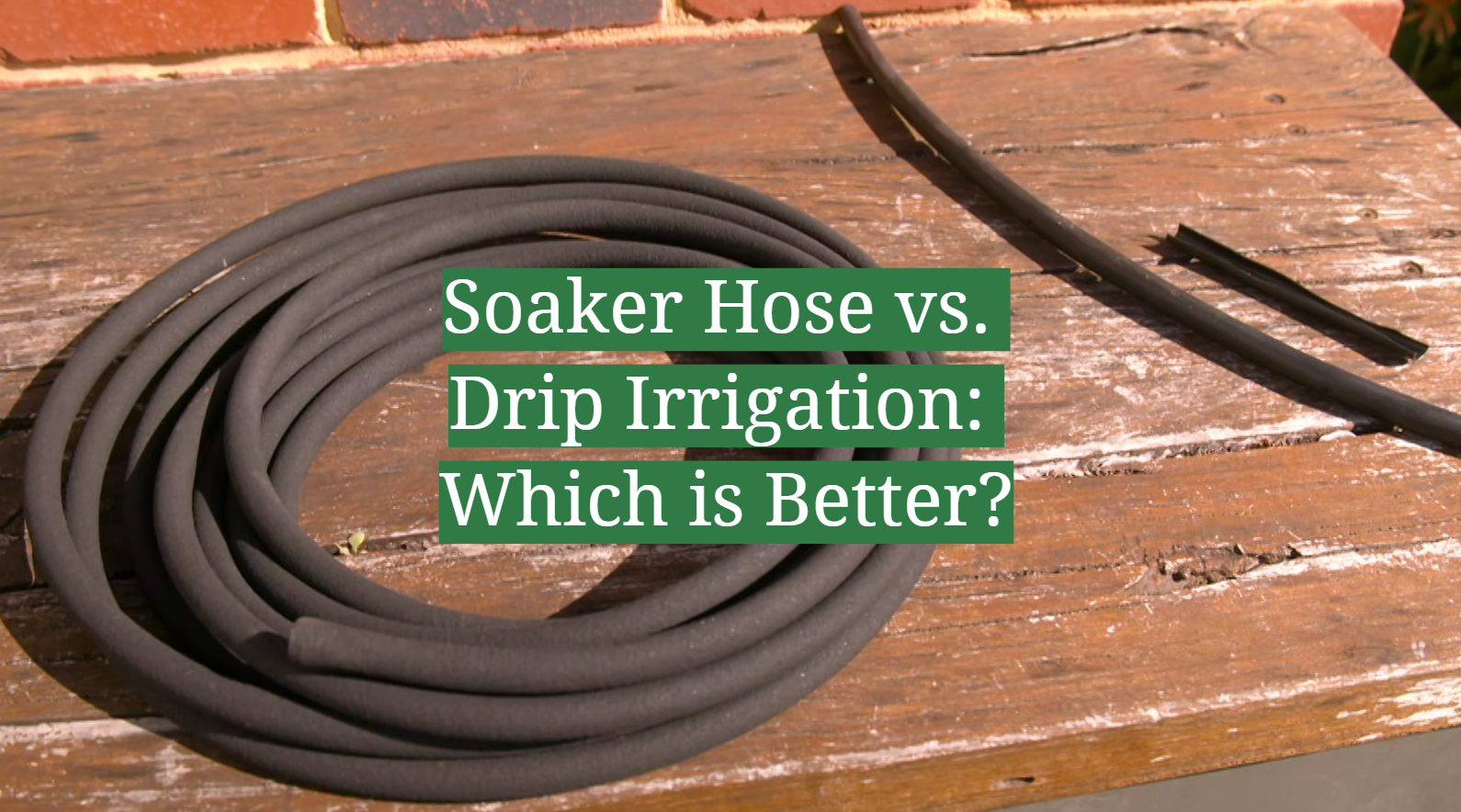

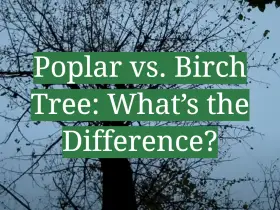


Leave a Reply
View Comments